Filoli Mansion and Gardens – Woodside
categories: Central Coast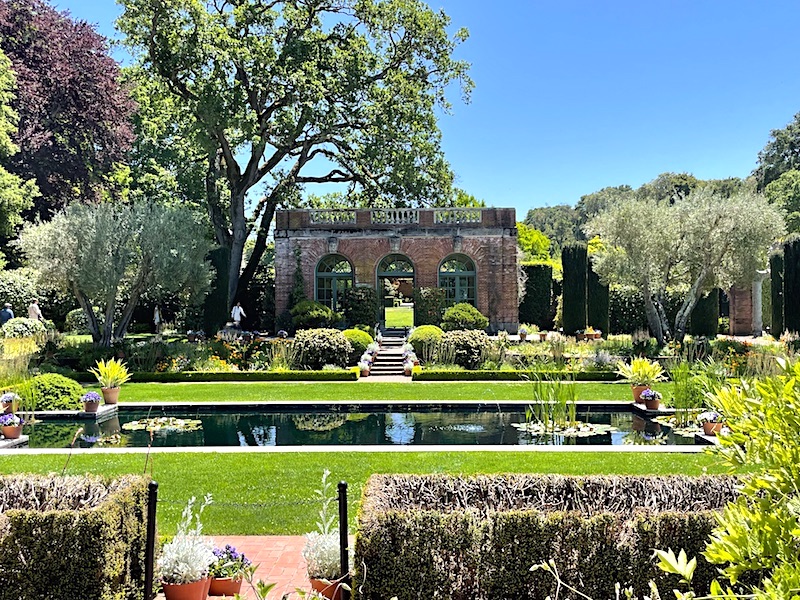
Thirty miles south of San Francisco at the base of the Santa Cruz Mountains near Woodside, California, is the Filoli Mansion and Gardens. The property consists of 654 acres, with the main country home and gardens occupying an area of about 16 acres. The estate was donated to the National Trust for Historic Preservation and is now operated as a private, non-profit organization called the Filoli Center.
My daughter, Liz, and I, looking for a relaxing day trip in the San Francisco Bay Area visited the grounds of Filoli on a sunny, warm spring day. We discovered the site online and were intrigued by photographs of the historic California mansion and the beautiful European-style gardens. We had an enjoyable day that exceeded our expectations!
We began our preparation for Filoli by first investigating its Website. Here we noticed a suggestion that visitors make reservations due to the limited number of admissions offered each day. The Filoli Website also indicated that visitors should expect weekend sellouts. We booked our tickets for a Monday visit a day ahead of time and received a digital receipt by email.
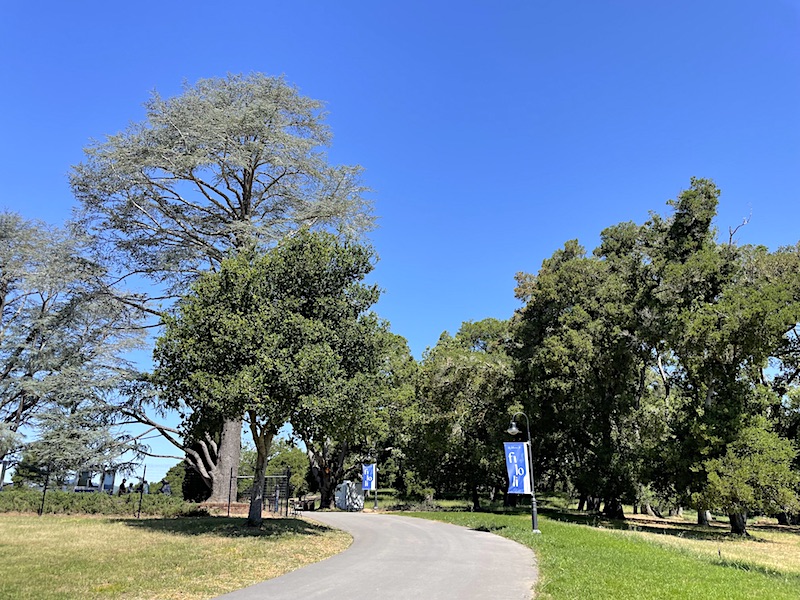
We were supposed to receive digital tickets, but the items never arrived in my email Inbox. Since we had a receipt, we decided to go to the entrance and resolve the issue there. At a small kiosk near the gateway to the home and gardens, we explained our ticket situation and were admitted without any issues. Soon after entering, we found displays with maps of the facility along with information about daily talks and demonstrations. Most programs lasted about 15 minutes and took place either at the entrance to the home or in the gardens.
We decided to begin exploring the mansion first. There were no crowds, and the tour was self-led with informational plaques provided in each room. The architect Willis Polk designed the 54,256 square foot Georgian-style home for William Bowers Bourn II and his wife Agnes Moody Bourn. When the home was built, William Bourn II was the owner of a prosperous California gold mine and president of the water company that supplied drinking water to the city of San Francisco. The $425,000 home was constructed from 1915 to 1917, while the extensive English Renaissance-style gardens were laid out later between 1917 and 1922.
The Bourns, who owned multiple homes, including one in San Francisco and Muckross House in Ireland, envisioned Filoli as their self-sustaining country home. The name Filoli is an acronym formed from the keywords of the Bourn family creed: Fight; Love; Live: “Fight for a just cause; Love your fellow man; Live a good life.”
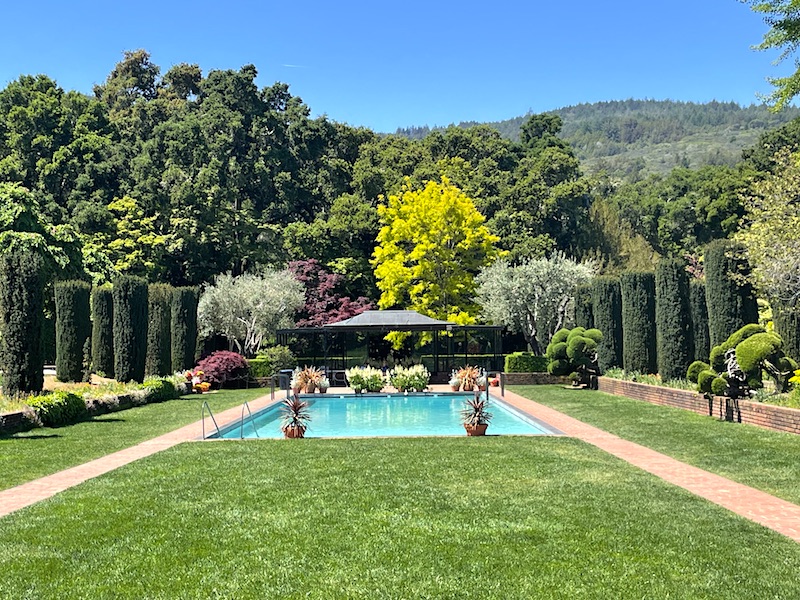
After William and Agnes both died in 1936, the estate was sold a year later to William and Lurline Roth, an heiress to a navigation and shipping company. The Roths kept the main house intact but worked with the original garden designer to add to Filoli’s extensive green spaces. They also added a swimming pool and pavilion in 1946 that blended into the surrounding gardens. After the death of her husband, Mrs. Roth moved to a smaller home and donated the entire estate to the National Trust for Historic Preservation along with a generous endowment to support their annual operating costs.
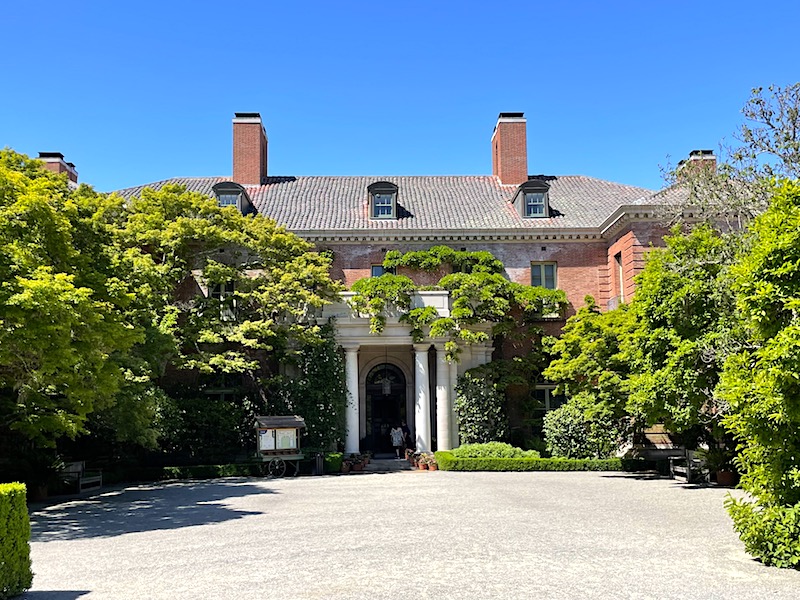
My daughter and I were immediately impressed after passing through the front door of the mansion. The 56-room home was designed for entertaining guests on a grand scale with a large ballroom, reception room, drawing room, and formal dining room. There were also intimate spaces such as a trophy room, study, and library. Even though the house was empty when the Trust took ownership, many of the belongings were donated back so the current rooms appear with their original furnishings.
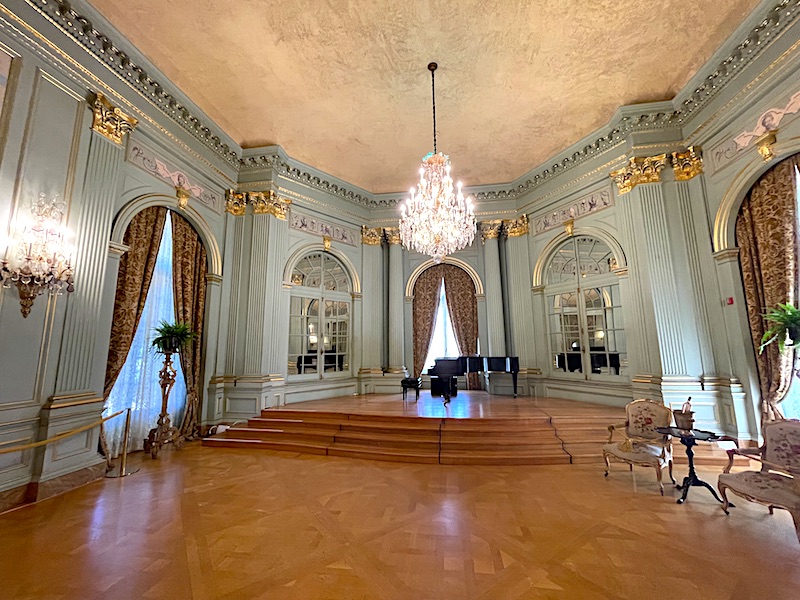
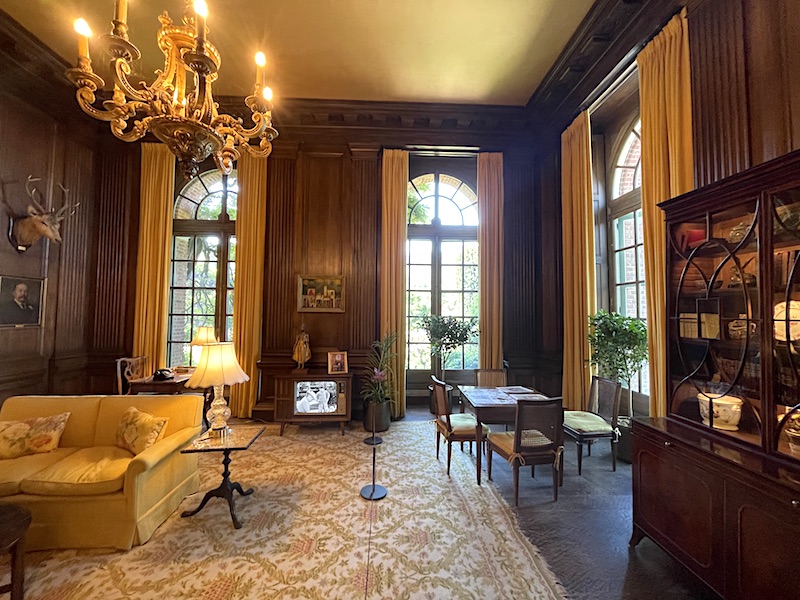
After the formal reception and living areas, we toured the south wing that housed the kitchen, butler’s pantry, and staff living quarters. The first items we spotted upon entering this area were an electric call board and a dumbwaiter. They quickly brought back memories of seeing the same type of setup featured in the Downton Abbey TV series. Daily tours limit current visitors to the first-floor rooms and kitchen areas. Currently, the ten main bedrooms on the second floor are not accessible.
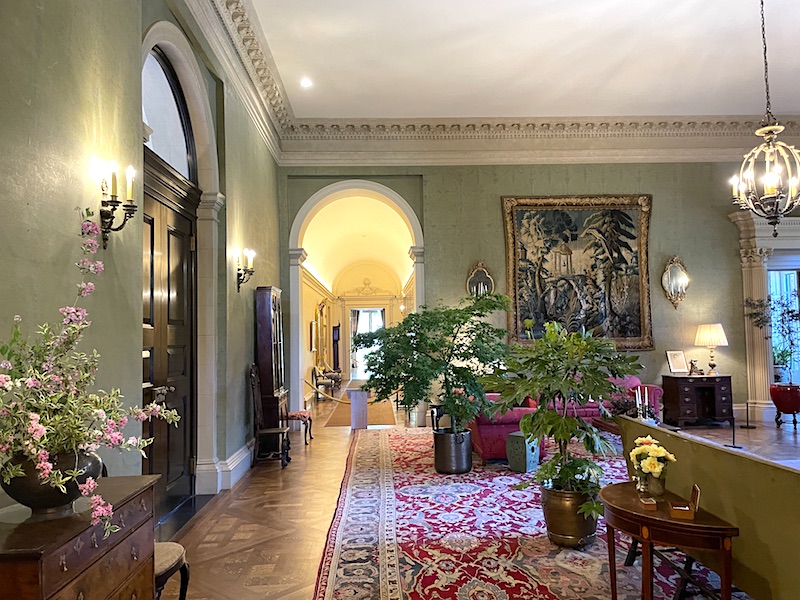
We greatly enjoyed touring the stately first-floor rooms and reading the informative plaques that explained the function of each room. Each space was lavishly furnished and decorated with extensive flower displays. Everything seemed prepared for the homeowners to arrive at any minute. The atmosphere of the tour was further enhanced by background sounds suggesting activities that may have taken place in each room. Even the TV had programs from the 1950s, such as a black-and-white episode of “I Love Lucy.”
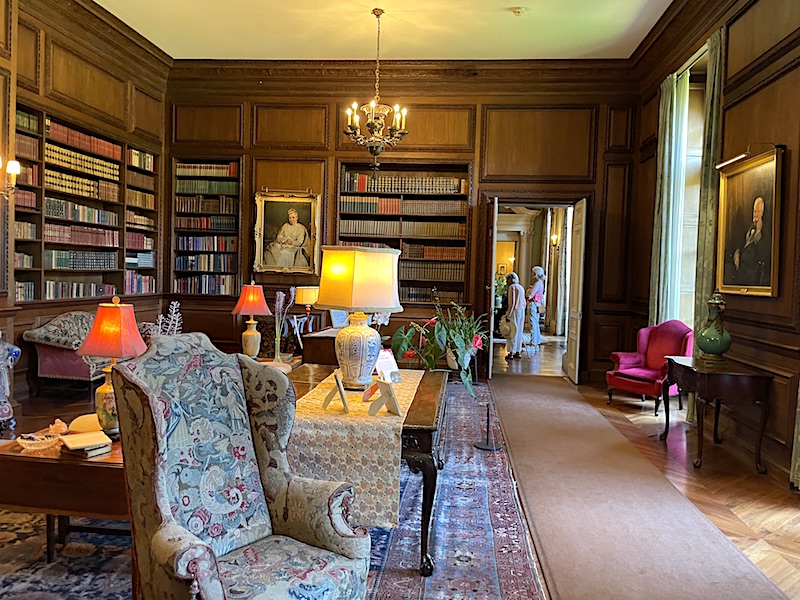
It was enjoyable looking at the multitude of bookshelves and small family items placed on the tables. There were abundant original paintings and sculptures spread throughout the rooms and each space was tastefully furnished to display wealth. The stately dining room even featured a large chest containing the estate’s formal silverware.
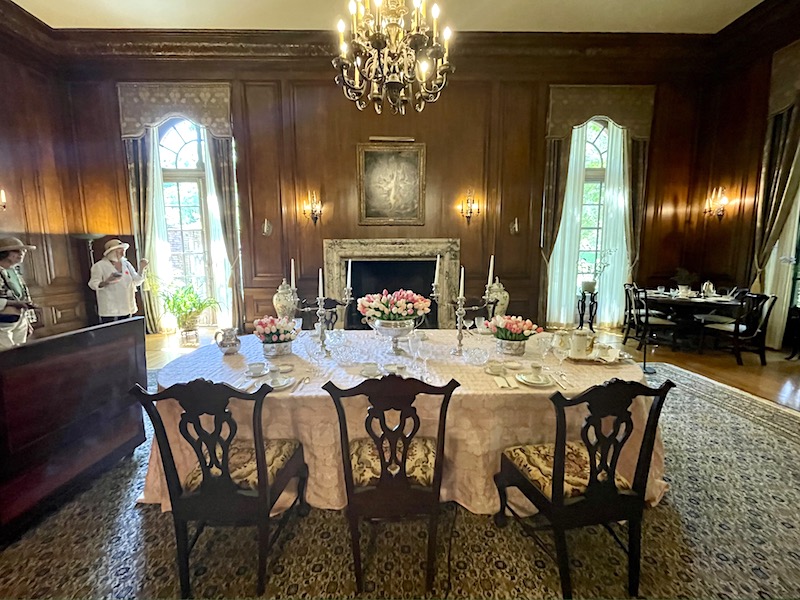
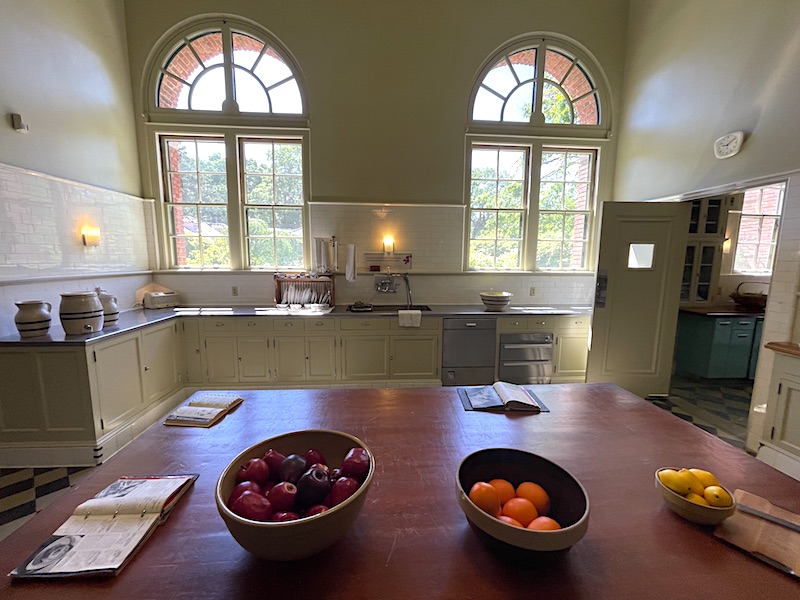
I found it interesting to look out through the windows of the mansion at the scenic landscaping and imagine how it felt to live there. We thoroughly enjoyed touring the main house and looked forward to the rest of the estate.
Before we visited the gardens, we made a detour to the Visitor’s Center, which housed a cafeteria, meeting rooms, and restrooms. The Quail’s Nest Cafe featured fresh salads, sandwiches, and wraps on the day we visited. In addition to many coffee choices, there was also an extensive offering of fresh pastries.
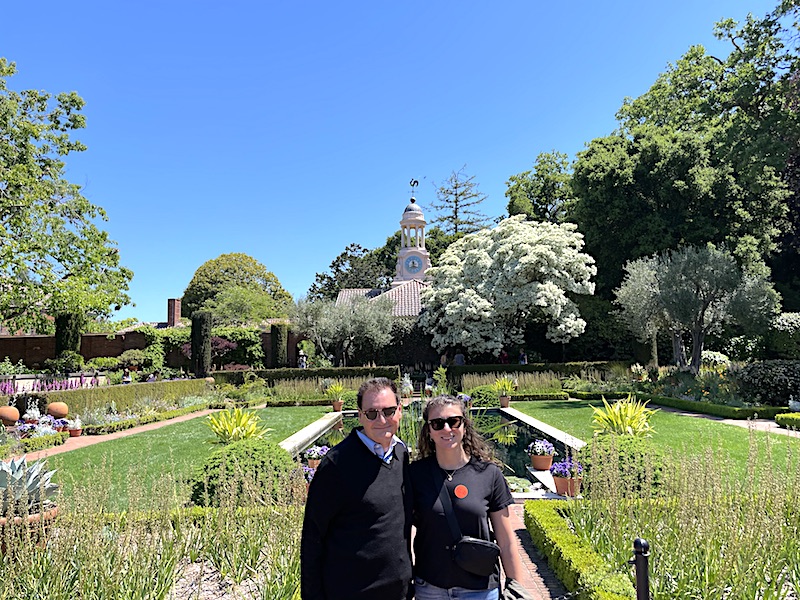
Later in the day at 2 pm, they served an afternoon tea. We were tempted to wait for the petit fours, but it was too early, so we headed to the gardens. On the way there, we encountered the Clock Tower Boutique, which featured Filoli signature items and a vast collection of Filoli-grown plants that were available for purchase. At the boutique, visitors could also buy a printed Visitor’s Guidebook that provided extensive information and details about the estate.
- Book Your Accommodation HERE
- Buy Travel Insurance
- Get a Car Rental
- Search for Great Tours HERE
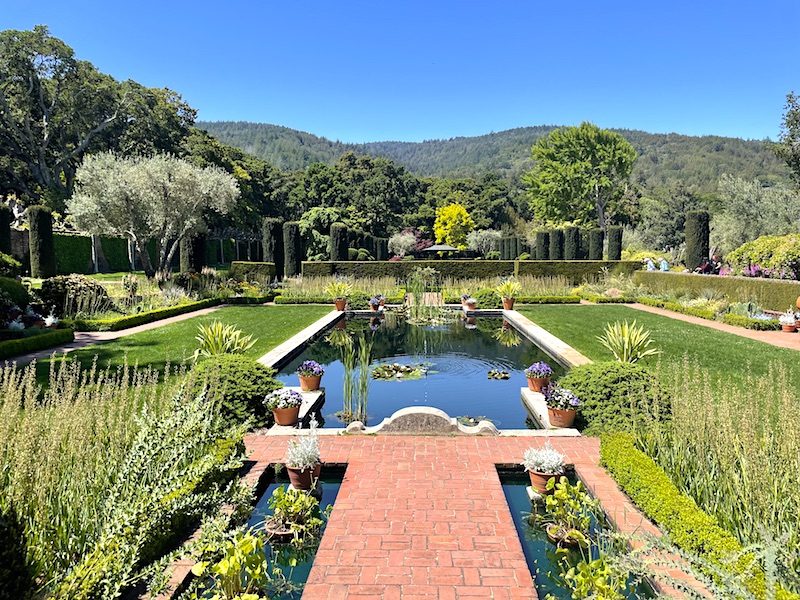
The formal English Renaissance-style gardens occupied much of the 16 acres of the main complex. Located southeast of the main house, they consisted of a series of lush flowerbeds and yew-lined pathways that extended up a slope. The first vista we encountered was the sunken garden that featured a rectangular pool surrounded by a lawn and olive trees. A glass-paneled structure known as the Garden House served as the backdrop for the sunken gardens.
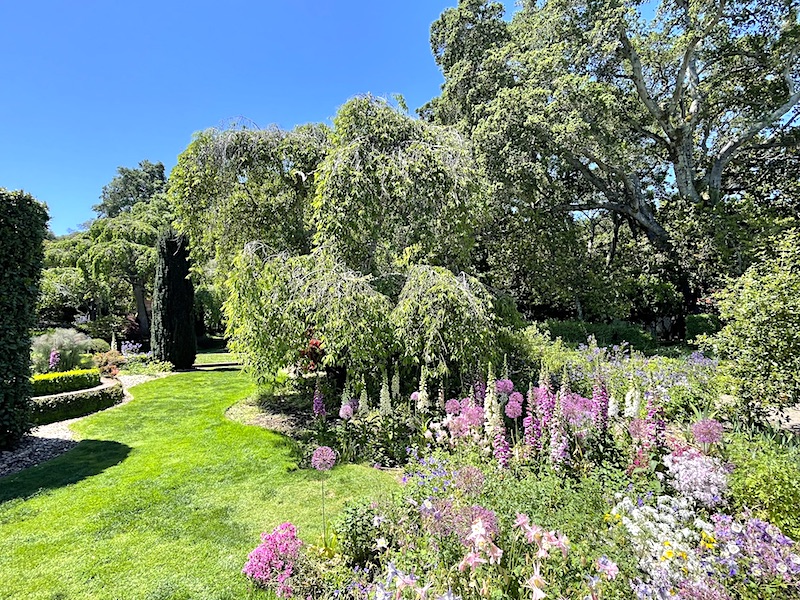
In the back of the Garden House were the formal walled gardens created by 10-foot high brick walls and many clipped hedges that produced small natural ornamental rooms such as the Dutch Garden. In this location was also the terraced Wedding Place built in 1941 by the Roth family for their daughter’s wedding. Further up the slope were the fruit orchard, daffodil meadow, cutting garden, and High Place sitting area.
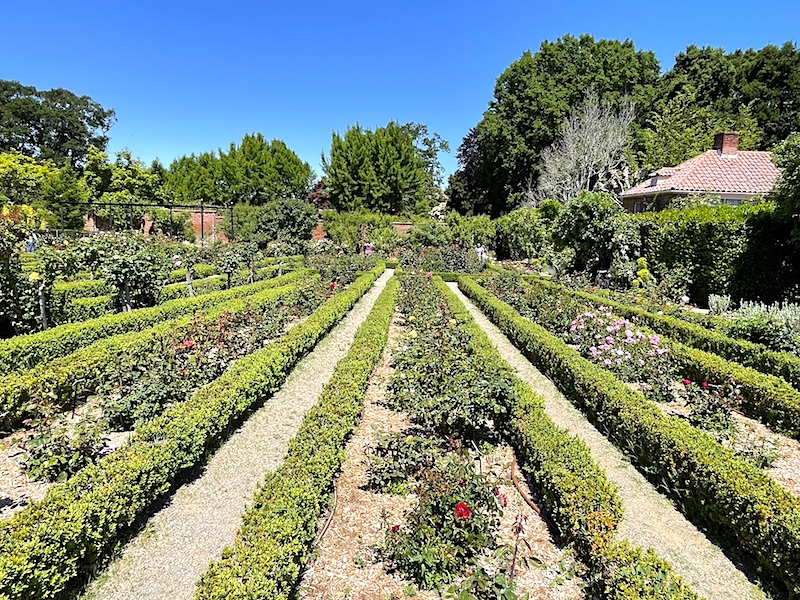
Nearby were working gardens that consisted of rows of flowers, fruits, and vegetables that were used for displays in the main house. A highlight for us was found midway up the slope where we discovered an extensive series of manicured flowerbeds that featured a colorful variety of roses. Sentimentally, I spent a few minutes photographing the Queen Elizabeth Rose.
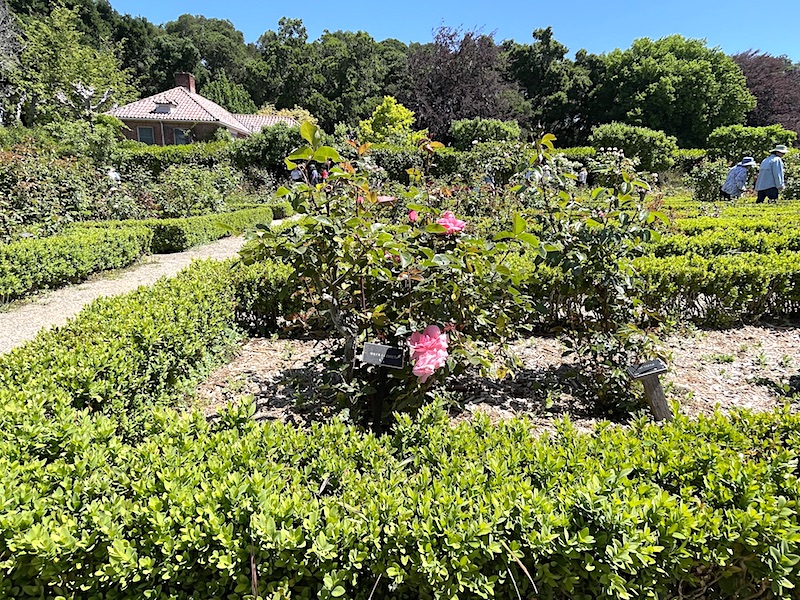
Bruce Porter created the structure of the Filoli gardens and worked with the head gardener, Louis Mariconi, and innovative horticulturalist, Bella Worn. Together they created the look and combination of plants, flowers, trees, and shrubs that are on display today. Half of our time at Filoli was spent in the flowering spring gardens. It was breathtaking and very refreshing to walk the pathways while taking photographs. Each area of the gardens provided striking vistas and beautiful views. It was equally rewarding to walk around the mansion to see the Georgian-styled terraces that decorate the outside of the main house.
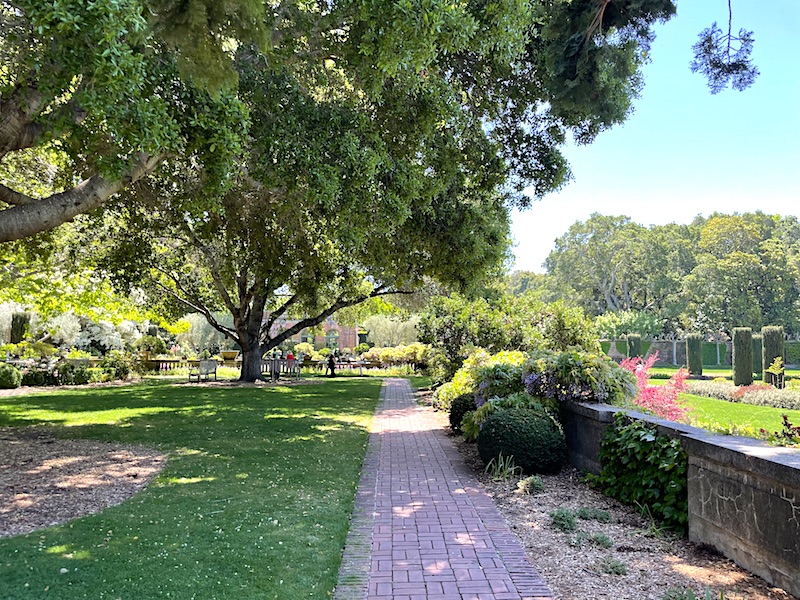
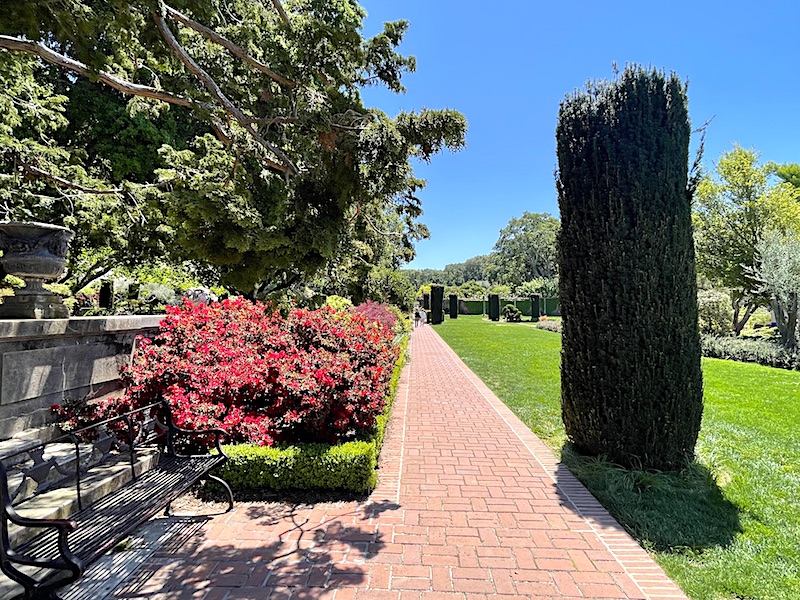
On the northwest corner of the home was a mile-long self-guided hiking route called the Estate Trail. On the day we visited, very few people chose to take the opportunity to see this natural area of the estate. My daughter and I walked the well-marked pathway and found it to be an informative and rewarding part of the Filoli experience. We were first impressed by the small Fault Bridge that took us from the North American Tectonic Plate to the Pacific Tectonic Plate and crossed the famous San Andreas Fault. A thin, trickling creek marked the location of the fault line. It was worth walking the trail to see this unique feature alone. Upon investigation, we learned that the Bourns experienced a small quake during the first month they occupied Filoli, but it did not cause any damage to the main home.
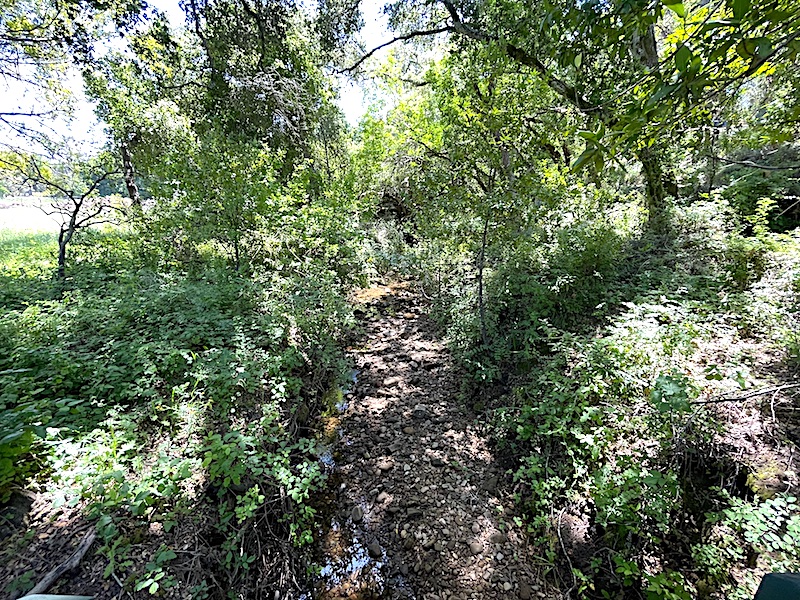
As we walked the nature trail, we encountered an oak-madrone forest, three redwood groves, and California chaparral vegetation. At the center of the walk was a small nature center that presented an exhibit on the deer, turkeys, birds, and other animals that inhabit the local environment. Our hike finished by walking along the hay fields that still produce over 1,000 bales yearly. One of the highlights of our stroll was the dramatic view of the mansion and gardens from afar.
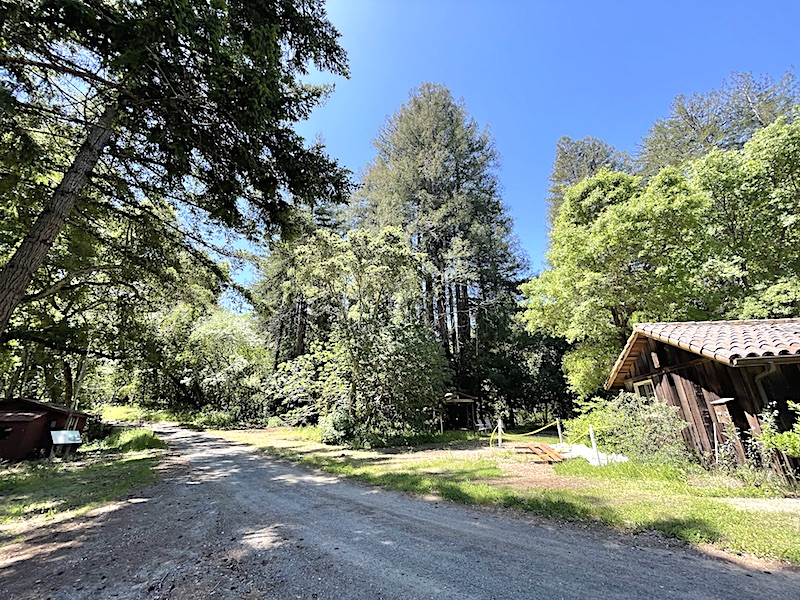
When you decide to visit Filoli, first investigate their extensive Website. Filoli is open every day from 10 am to 5 pm and offers informational programs for the public. Each season brings highlights that feature different changes and events, even though the primary offerings of the tour remain the same.
The gardens come alive during the spring as multitudes of flowers and plants bloom with a variety of colors. Summers spotlight live music and stage performances on Thursday evenings. Fall features the colorful changing of leaves and plants. The winter holidays are especially festive at Filoli as the gardens are decorated with lights while the mansion displays holiday decor that includes tables decorated to celebrate different winter holiday traditions. Both day and evening admissions are offered during the winter holidays.
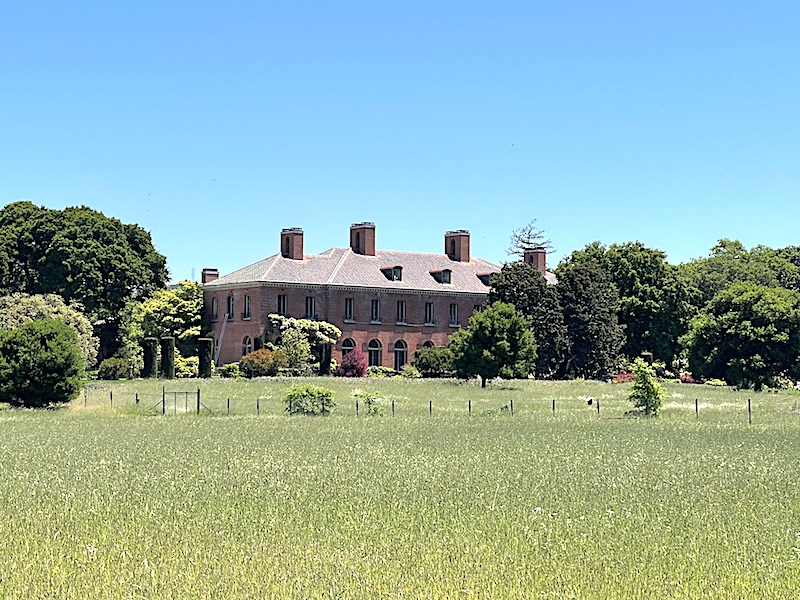
Overall we spent about 2 1/2 to 3 hours at Filoli. You could easily extend your day by enjoying lunch, shopping, and taking advantage of the offered demonstrations. There was ample parking, and all areas were easily accessible. We found every attraction on the estate to be rewarding to visit and genuinely enjoyed experiencing this unique part of early 20th Century California history.
We further enjoyed drawing parallels and imagining Downton Abbey scenarios that may have occurred on the property. Our day at Filoli was so enjoyable that we are looking forward to revisiting the estate at different times of the year. If you are traveling through the Silicon Valley area or are looking for a refreshing day trip from San Francisco, consider putting Filoli high on your list of places to visit.
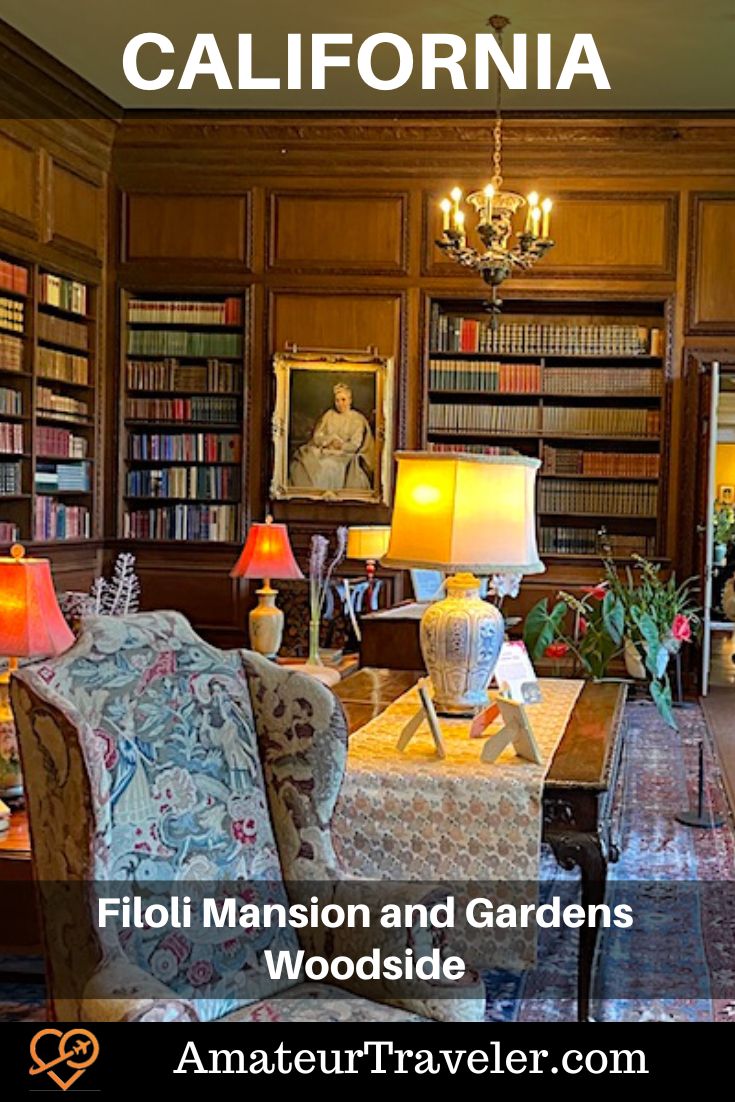
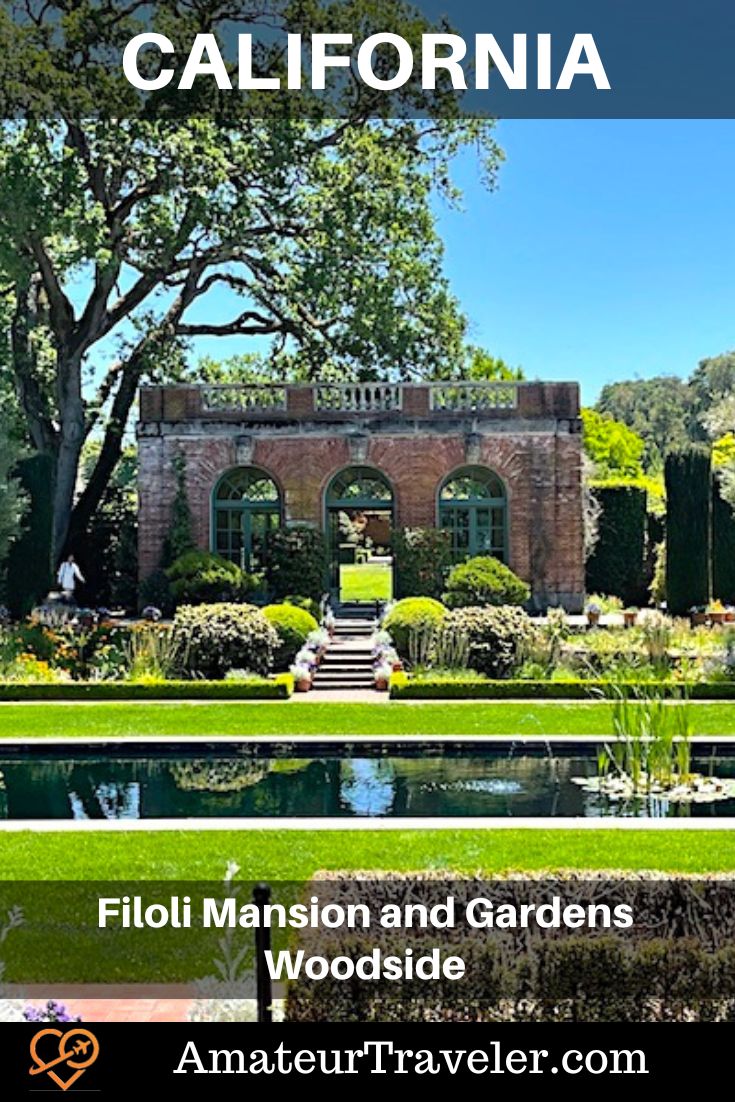
Leave a Reply
Tags: san francisco peninsula, woodside


